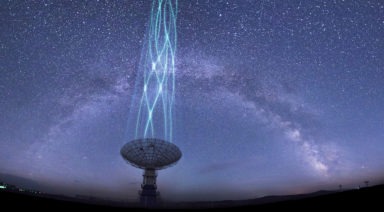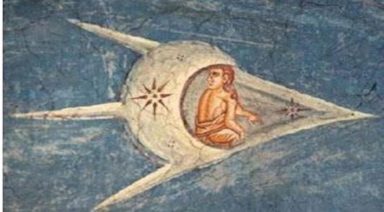Achieving Modern Enlightenment With Gurdjieff’s Fourth Way

Around the turn of the 20th century, the mysticism movement aimed to bridge the gap between western and eastern philosophies with theosophy, esotericism, and a burgeoning interest in the occult. This spiritual zeitgeist inspired George Gurdjieff to develop the Fourth Way; exercises that can be incorporated into one’s daily life to remove yourself from a state of hypnotic waking sleep.
The Fourth Way: Hindu, Sufi, And Christian Esotericism
Deeply devoted spiritual practices often focus on either a detachment from the physical or a strict dominance over it. Georges Gurdjieff did not see these attempts to embrace a higher self as practical, believing instead that enlightenment could be achieved without asceticism.
Born in 1866 in Alexandropol, Armenia, Gurdjieff was inspired by the theosophical movement and decided to travel to Central Asia and the Middle East in search of esoteric spiritual leaders and seekers of truth. Upon his return, he penned a series of books that would become the foundation of his spiritual practice: The Fourth Way. The second book in the series and 1979 film, Meetings with Remarkable Men, detailed his encounters with spiritual leaders on his journey who were more likely fictional characters symbolic of the three “ways” preceding his.
During his travels, he was inspired by the spiritual ways of the fakir, monk, and yogi, though he saw their methods as only successful in achieving a fraction of development, with the more practical roots of their disciplines lost in antiquity. At the same time, he believed that the effects of modern technology and society were entrancing everyone into a hypnotic waking sleep.
The fakir, living solely on alms, gives his life to the domination of the physical body, requiring endurance and pain. The monk is focused on emotion through faith, religious zeal, and sacrifice. While the yogi gives his life to the mind, developing his inner being at the cost of undervaluing his body and emotions. Gurdjieff saw these three ways to be extreme paths to enlightenment, and that there must be a more rounded fourth way to be undertaken without completely sacrificing certain aspects of life.
Gurdjieff noticed that most of the paths to enlightenment required some form of asceticism, but he didn’t want to accept that as the only avenue, so his life became a testament to this, although sometimes paradoxically.
Despite his adherence to spiritual development, he was known to be a bit of a hedonist, fond of armagnac and opium. His philosophy was strict, despite its aversion to religious rigidity; he professed an ethereal worldview, founded on pragmatism and human desires.
But this seems to be the point of the Fourth Way, a middle ground of continual search, always questioning one’s path, grounded in reality, while attempting to connect with the otherworldly.
The Fourth Way Exercises
So, what exactly was Gurdjieff’s method for reconciling one’s humanity with spirituality? It all stems down to the Fourth Way’s exercises known as “The Work.” Essentially, it is a method of constant, objective introspection, to wipe away the societal constructs and attributes that have been imbued on man. Gurdjieff gave two primary exercises in addition to some fundamental laws and concepts.
- Self-Observation
-
-
- Through a daily ritual of self-observation, one should strive to observe their own behavior and habits, particularly those that would be viewed negatively in others, but observed without judging or analyzing.
- This internal observance is done while simultaneously being aware of your external environment.
- Self-observance should be non-critical and should be understood: you are not what you observe.
- What you are observing is a façade of a false personality, a product of modern society.
-
- Self-Remembering
- Self-remembering is a slightly abstract concept of remembering oneself in the past, rather than simply remembering what happened.
- So much of our past is lost through our inefficient memory. We may feel something profound and swear never to forget it, but within a few years its gone. If one actively and regularly makes the effort of self-remembering, one can make profound discoveries.
- Self-remembering leads to a state of higher mind, free from anything negative.
- Self-observation should be understood before self-remembering.
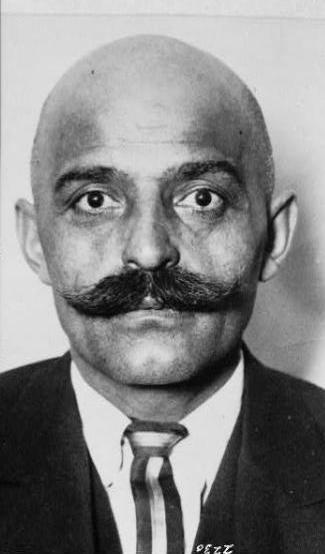
These processes of self-observation and self-remembering are meant to break down the many I’s, or the fragmentation of the psyche through personal desires separating us from each other. Gurdjieff spoke about our being as having two parts: essence and personality. Our essence is the natural part we are born with, while personality is everything artificial learned in society. Our being is also composed of three centers: the intellectual, emotional and physical. And one must use “the Work” to strive to attain the higher intellectual and higher emotional.
There are two conceptual teachings of Gurdjieff that sum up his philosophy of the Fourth Way: The Law of Three and The Law of Seven.
The Law of Seven, also known as the Law of Octaves, is a fundamental cosmic law that states: nothing in nature constantly occurs in a straight line, everything eventually deviates. This all-encompassing law hints at his belief in an intrinsic connection between music and nature, the idea that between certain musical intervals more energy is required to maintain the original intent. This is meant to speak to the unpredictability of human nature, aims, and endeavors, which also require extra energy at times to continue their original course.
The Law of Three is another fundamental cosmic law, stating that every phenomenon is composed of three sources: active, passive, and neutral. This can be thought of as a law of transformation which always requires affirmation, denial and reconciliation. This triad of action creates an ascending or descending octave and is symbolic of every structure and action within the universe and man.
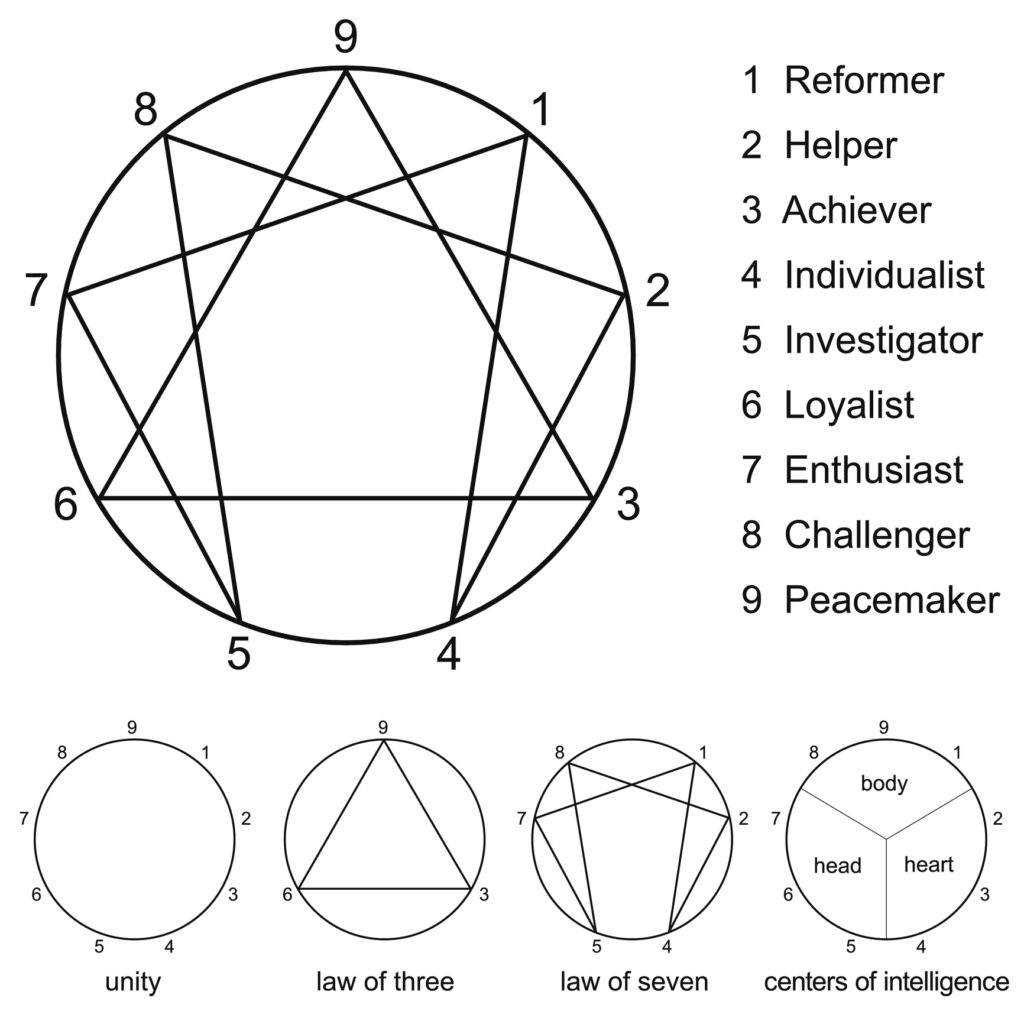
These laws are depicted in the most recognized symbol of Gurdjieff’s Fourth Way, the enneagram, a 9-pointed figure within a circle.
This connection of music and philosophy was recurrent throughout Gurdjeiff’s philosophy as he became known as a musician. He spoke of music as having a sort of objective power that could be felt in the same way a snake responds to the music of a snake charmer.
Gurdjieff’s ideas never became widely popular in the New Age and self-help space, though they are often classified there. The Fourth Way is not a concept that has mass appeal. Honest self-observation can be painful and bring anxiety to those who are not ready to face it. Stripping down your identity and confronting negative personal traits takes hard work and can leave one feeling lost or confused.
This is why it is necessary to resist the urge to judge what you see and just see it for what it is. Eventually it can become profound and redeeming, possibly even leading to a higher state of consciousness.
Aleister Crowley: The Wickedest Writer in the World
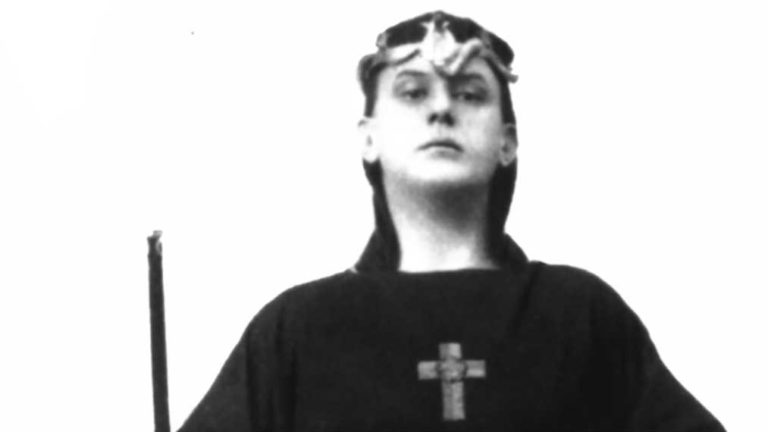
Known as “the wickedest man in the world,” English occultist and author Aleister Crowley actively embraced and contributed to his own notoriety. He delighted in shaking up social status quos, and used his infamy to draw a veil over, and at the same time draw attention to his esoteric work.
Crowley (b. 1875) died in 1947, leaving 61 books, some published during his lifetime — others published posthumously in the 1970s, 80s and 90s. Crowley’s books enjoyed a revival, and Crowley himself achieved cult status during the expanding consciousness revolution beginning in the late 1960s.
Crowley was a prolific writer, and during his life wrote about the Qaballa, yoga, and the “Goetia,” attributed to the biblical King Solomon. He also penned commentaries on Thoth, “the Tarot of the Egyptians,” and the esoteric use of drugs to name but a few.
Crowley the Drug Fiend
The 1922 novel, “Diary of a Drug Fiend” was, according to Crowley, “A true story, rewritten to conceal personalities.” In his quest to understand the influence of different types of drugs on the mind, Crowley was captured by heroin, documenting that struggle in “Diary of a Drug Fiend.” He also experimented with and wrote about psychoactive substances, including absinthe (The Green Goddess, 1917), hashish (The Psychology of Hashish, 1909), and cocaine (Cocaine, 1917). Crowley also published “A Pharmaceutical Study of Cannabis Sativa” by E.P. Whineray in his March, 1909 issue of his journal The Equinox.
Ever in search of peak experiences, epiphanies, and absolute insight, Crowley advocated incorporating drug use into all magickal ceremonies, demonstrating his drive to experience expanded consciousness by any means necessary. He believed that the use of these substances would succeed where religion and science had failed to solve the rubric of the true nature of reality.













